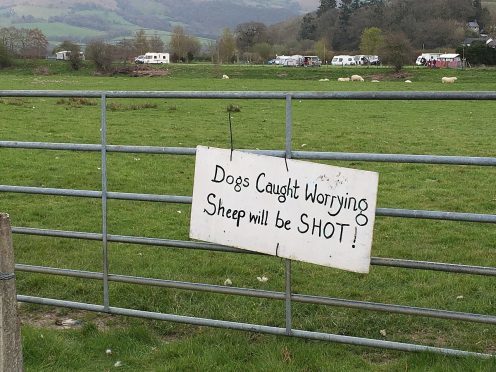Almost half of all dog attacks on sheep are carried out by straying or unaccompanied dogs, according to a survey by the National Sheep Association (NSA).
The survey, which was completed by sheep producers across the UK, revealed 40% of attacks were carried out by unaccompanied dogs.
Other findings included: 72% said dog owners assuming their pet would not do damage to livestock was behind most attacks; 62% said a lack of concern from pet owners had led to attacks taking place; and 26% said they were most commonly alerted to an attack by individuals who were not directly involved.
“Domestic dogs attacking sheep is sadly an ongoing crime without an easy solution, but to keep talking about it and gathering evidence at every opportunity goes a long way in continuing to highlight the problem,” said NSA chief executive Phil Stocker.
“It is vital for dog owners to realise that any dog, no matter how well trained, is capable of attacking livestock and the effects stretch far further than the initial and obvious injuries.”
The survey also revealed that 63% of attacks resulted in the death of sheep and 67% resulted in injury, while 45% of attacks caused a loss of production, mainly abortion in ewes.
Almost half of respondents – 43% – reported that sheep had to be put down in the months after an attack, and 39% said sheep had experienced injury from fleeing out of control dogs.
Mr Stocker urged all affected farmers and crofters to report dog attacks to the police.
The survey revealed that only 40% of attacks were reported, of which 18% were given a crime reference number and 17% were given a crime incident number. One in ten producers rated the police response as ‘very helpful’ and the same amount rated it as ‘unresponsive’.
“If we’re to build up an accurate picture of the true scale of the problem, it is vital that those who’ve experienced an attack on their livestock report it to the police and ask for a crime or incident number,” said Mr Stocker.
“We have to continue to put pressure on police forces to deal with this crime in a serious and consistent way and if they haven’t the resources to do that then we need to help them build evidence that they are not keeping up with reported crimes. I am afraid that we are hearing of police forces that are making the right noises but still not responding effectively.”
